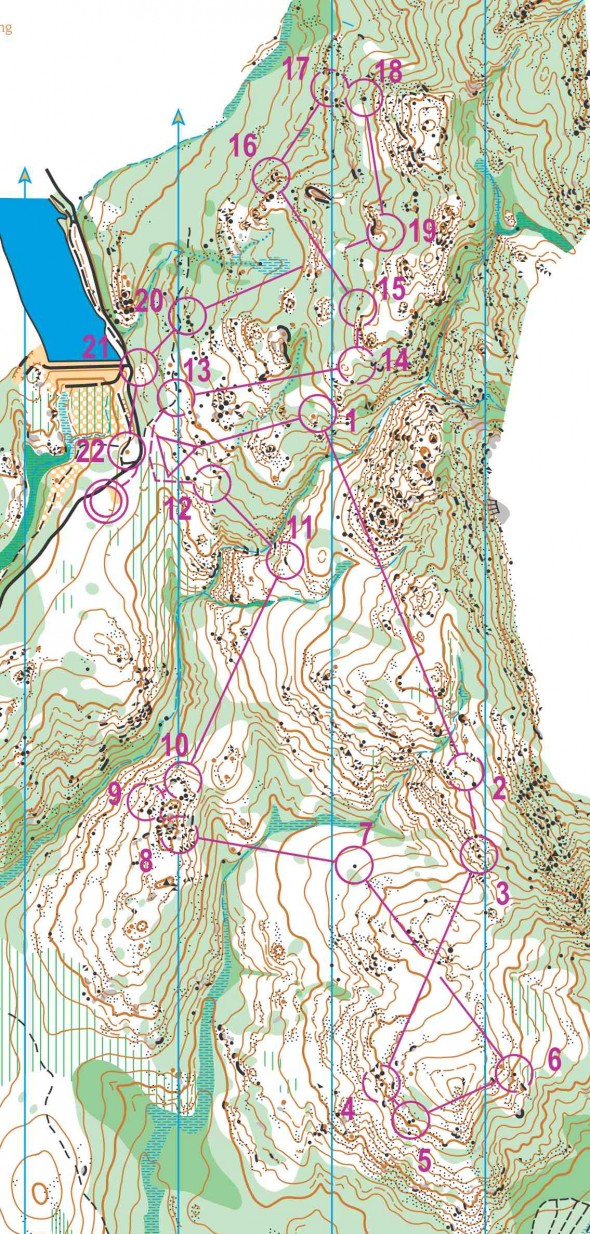
Daniel Hubmann (Switzerland) and Tove Alexandersson (Sweden) were the best in the tough and tricky middle distance World Cup race in Tasmania today. Alexandersson did an amazing performance and was nearly 3 minutes ahead of Mari Fasting (Norway) in second. In the men’s class the race was much closer – in the end the reigning World Champion middle distance, Olav Lundanes (Norway), was 55 seconds behind Hubmann.
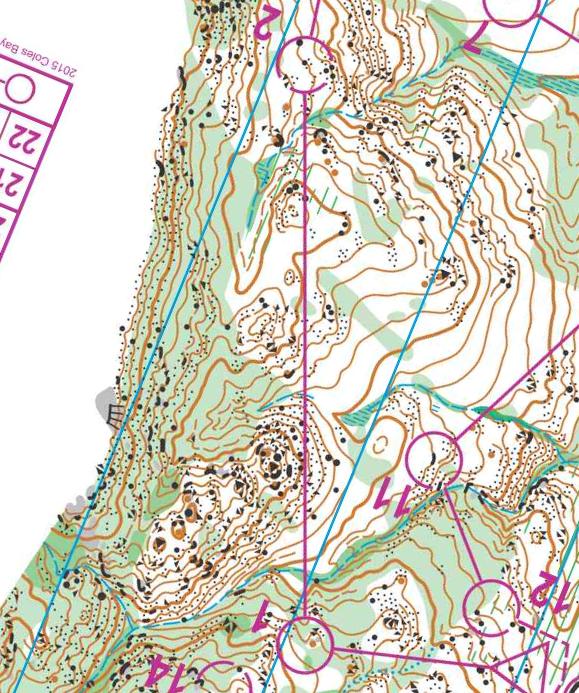
The stony terrain with many branches proved to be very tricky for the athletes. Very few of the athletes mastered the terrain – and one has seldom seen that many big mistakes in a World Cup race. For example in the women’s class nearly half of the start field lost more than 3 minutes to the second control, many losing 5-6 minutes – a leg which Tove Alexandersson won in 4:37. In the men’s class 10 runners lost more than 3 minutes to this control.
Lena Eliasson, the strong Swedish runner with one World Cup win last year, was one of the runners who really did have problems today.
– Big fail in todays race :-(. Really struggle to get details sorted out, but keep doing mistakes. Years biggest “bom” Done! #funcoursebutfail
Her Tweet after the race tells part of the story. The split times showing a 13 minute mistake to the 16th control tell the rest of the story. But Eliasson was not alone in putting in a 10+ minute detour today.
Hubmann strong
Daniel Hubmann mastered the tricky terrain best today – doing a steady race and finishing the course without any significant mistakes – around 2 minutes behind the “Superman” time which is the sum of the best splits on all legs in the course (see splits graph further down). Olav Lundanes looked like a winner for a long time – leading the race until the 9th control. But a 30 second mistake at the short leg to the 10th control cost the Norwegian the lead – and toward the end of the course mistakes at control 17 and 20 made the victory very clear for Hubmann.
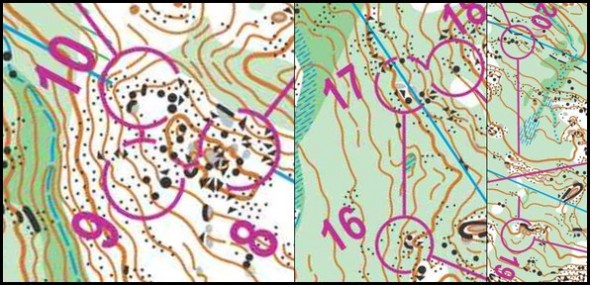
The below splits graph shows the development between the Top6 in the men’s class. It was a quite tight race until the 9th control with 6 runners within one minute – but from there on Hubmann’s stable performance secured him a very clear victory. Third placed Matthias Kyburz (Switzerland) had high speed, but struggled with the orienteering and did two mistakes of around 1 minutes (control 3 and 9). Swiss Florian Howald had a very good start, but also got technical problems.
A few runners outside the Top6 had the speed for a top result but did big mistakes in the first half of the course – some of these are shown in the splits graph below. Notably Gustav Bergman had compass trouble and finished only 12th after several mistakes around 2 minutes. Fabian Hertner, Mårten Boström and Anton Östlin destroyed there promising races with a bit mistake in the first part of the course.
Alexandersson fantastic – Wyder loses
– It was fun running orienteering in tricky terrain in Tasmania (Mari Fasting)
In the women’s class Tove Alexandersson again showed that she is the best when she has a top race – winning 12 of the 19 legs. In today’s World Cup race her race was close to perfect except for a period between control 5 and 8 where she lost around a minute. The Swedish runner simply had a different speed than the others in the field – the splits graph for the other runners show many lines going steadily downwards, indicating steady time losses. Mari Fasting was fastest of the rest of the field with a speed somewhat slower than Alexandersson – but with a very steady race except for a mistake towards the end of the race (control 18). Maria Magnusson and (3rd) and Tatiana Riabkina (4th) also did steady – but slower – races. Sara Lüscher (4th), Emma Johansson (5th) and Ida Bobach (6th) all had higher speed than Magnusson – but did at least one big mistake.
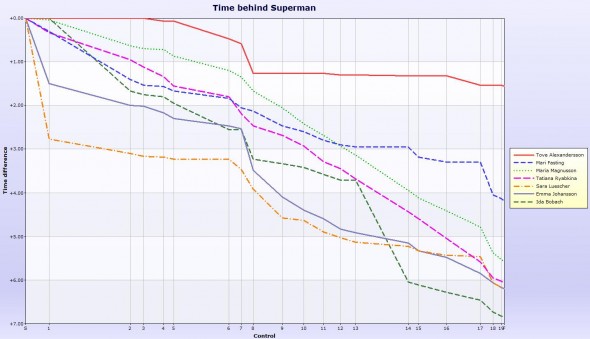
Ahead of the race reigning World Champions Judith Wyder and Svetlana Mironova were among the big favourites in today’s race. They did however lost 8 and 9 minutes to Alexandersson, respectively – and from the splits it looks like it was the speed (either running or orienteering speed) which cost them this much time rather than mistakes at single controls.
Notably also in the women’s class: Quite a lot of runners seeing in other in the forest and some pack running. Below is a pack running graph of the 9 last starters. Note also how Alexandersson passes both Judith Wyder, Ida Bobach and Lena Eliasson in the forest – leaving them there without a chance to follow.
Maps and courses
Results
Men
Daniel Hubmann SUI 0:31:48
2 Olav Lundanes NOR 0:32:43
3 Matthias Kyburz SUI 0:33:12
4 Florian Howald SUI 0:33:39
5 Andreas Rueedlinger SUI 0:33:40
6 Albin Ridefelt SWE 0:33:50
7 William Lind SWE 0:33:56
8 Magne Dæhli NOR 0:33:57
9 Jan Prochazka CZE 0:35:31
10 Anton Ostlin SWE 0:35:36
11 Tero Föhr FIN 0:35:50
12 Gustav Bergman SWE 0:35:53
13 Matthew Ogden NZL 0:36:00
14 Oskar Sjöberg SWE 0:36:07
15 Mårten Boström FIN 0:36:12
Women
1 Tove Alexandersson SWE 0:29:40
2 Mari Fasting NOR 0:32:18
3 Maria Magnusson SWE 0:33:42
4 Tatiana Ryabkina RUS 0:34:11
5 Sara Luescher SUI 0:34:19
5 Emma Johansson SWE 0:34:19
7 Ida Bobach DEN 0:34:58
8 Alva Olsson SWE 0:35:42
9 Judith Wyder SUI 0:36:12
10 Sarina Jenzer SUI 0:36:45
11 Svetlana Mironova RUS 0:37:19
12 Lizzie Ingham NZL 0:37:33
13 Lilian Forsgren SWE 0:37:57
14 Sabine Hauswirth SUI 0:38:07
15 Julia Gross SUI 0:40:06
Full results
 World of O News
World of O News
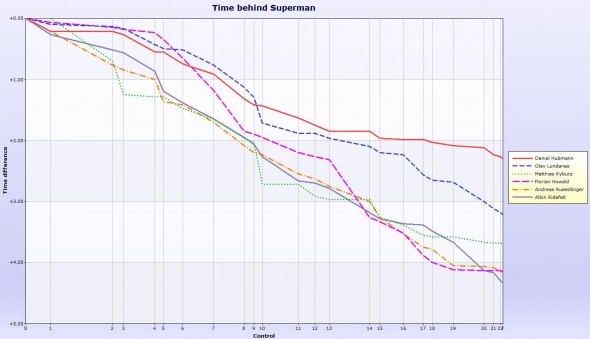
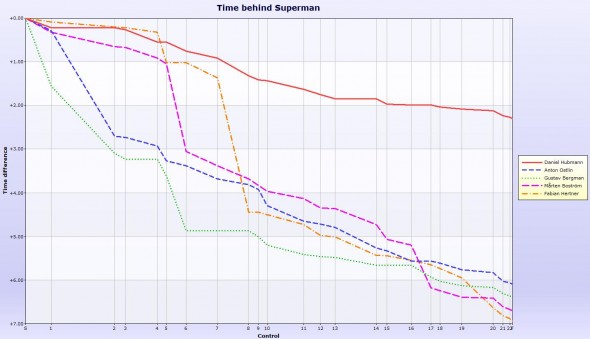
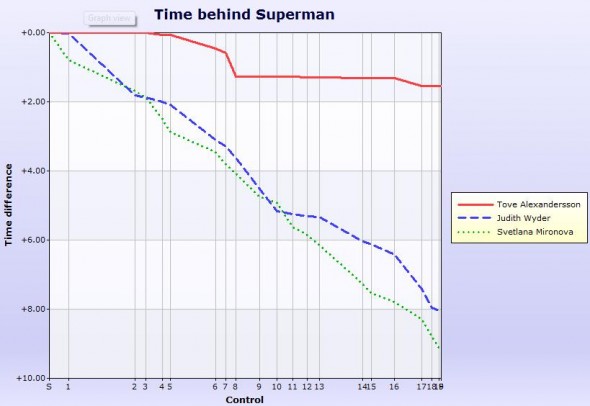
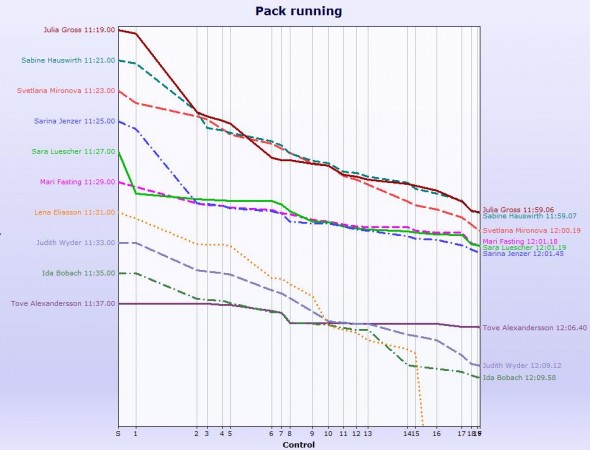
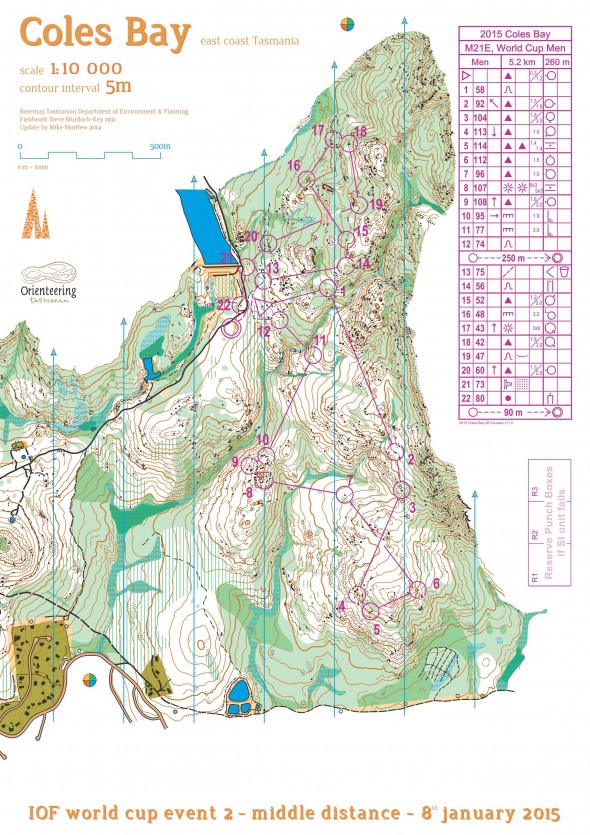
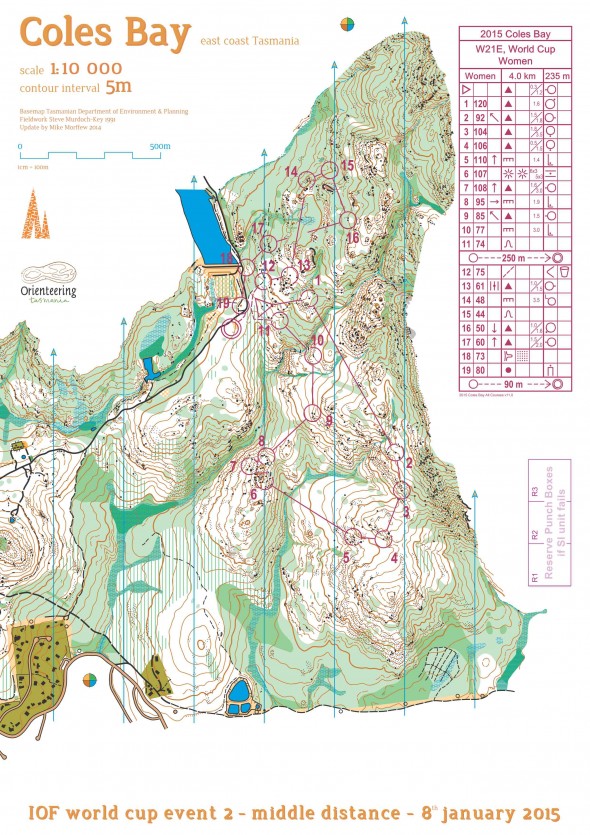



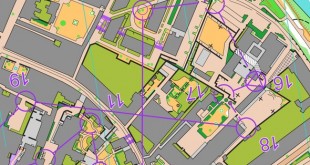
At the mens race we find some controls with extraordinary many red marks in winsplits. Control 2: 15 (of 55 runners), control 8: 16 and control 19 with 20 red markings. At the womens, the same as the mens second control (from a slightly other direction) results in 15 red label for 41 competitors.
One can say these where just difficult controls and the best managed to get them all without timeloss. Still it would be interesting to reflect about why these controls were difficult. ->none looks espescially difficult (significant attackpoints on map)
One should perhaps not underestimate the effect of possibly numerous poisenous snakes in the terrain, can have on the runners concentration, especially since the organiser warned about this the bulletins!
I’m a bit puzzled why #2 caused so much carnage – I thought it was one of the easier controls on the course, with mostly good visibility on the leg and a good attack point (the dry stream/gully before the control). The people I spoke with who made mistakes mostly dropped too low and then had difficulty relocating.
The third-last control (#20 for the men) was the one I was expecting to cause the greatest difficulty.
I can confirm that it was very easy to get too low on that control. What had happened to me was as Blair describes: When crossing the dry stream gully I was too low. But the rocky area to the west of #2 looked like a solid cliff wall and I thought I was too high at the cliff north of #2. So I went further down and had some big difficulties relocating.
Photo of control posted on Twitter at https://twitter.com/2015OceaniaWCup/status/553507624738516992
I walked the leg 2 twice with course setters and if you were out to the right and hit the ridge at about 75% along the leg without knowing exactly where you were it causes challenges. I would imagine this is what may well have happened to a number of the runners.
As Blair says above you had to do the hard work and climb to get to the dry stream gully before the control and not come from the right of the line. Less risky choice.
By the way, the course setters tell me they did not see any snakes at Coles Bay but a lot of blue tongued lizards instead.
i would love to see some photos of this terrain…